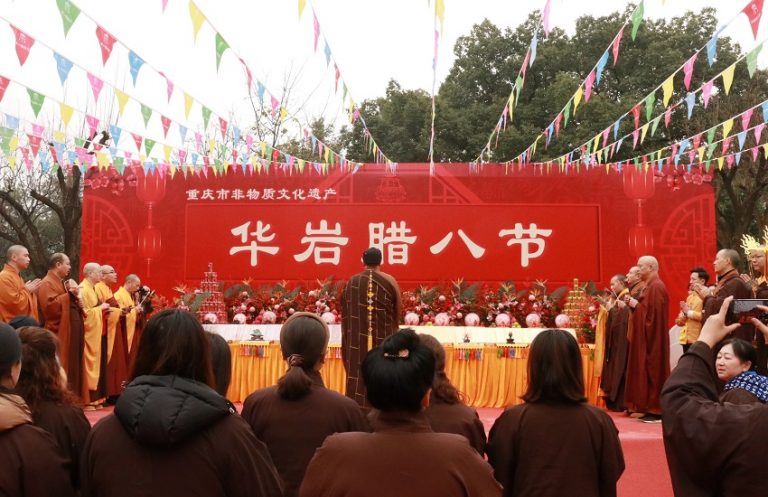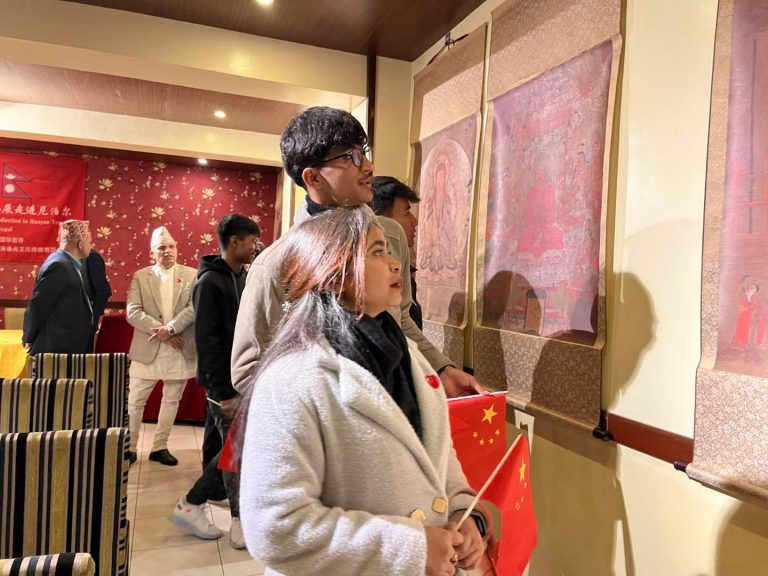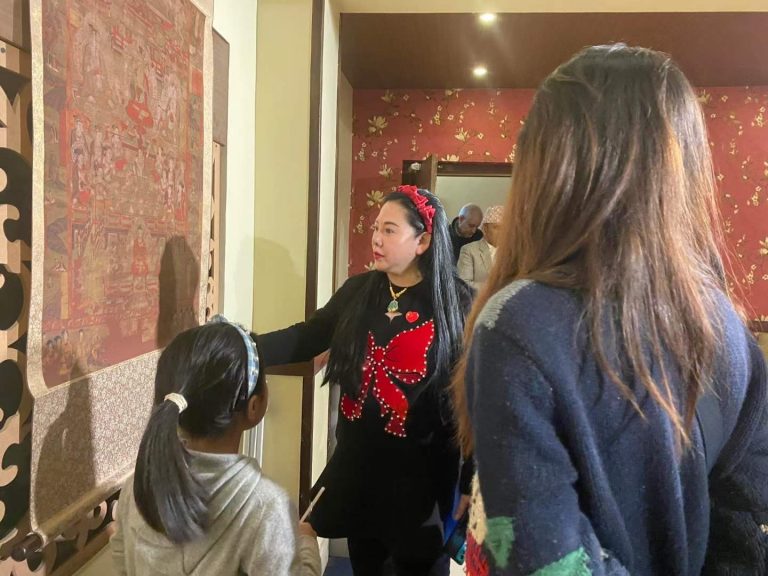
Huayan Temple in Chongqing is one of the top ten ancient temples in China. The temple derives its name from the Huayan Cave located to the south of the temple grounds. It is a Zen Buddhist temple, located in one of the top ten Zen forests in southwest China. It is a large-scale and majestic temple.

Huayan Temple has been committed to the protection of intangible cultural heritage for a long time. This time, it organized the “Exhibition of Dunhuang Silk Painting Reproduction in Huayan Temple Collection Entering Nepal” in Kathmandu. It was inaugurated by Nepali Professor Dr Jagat Prasad Upadhyay.
The exhibition was organized to mark the cultural exchange and to help deepen cultural development and mutual learning between Nepal and China. The exhibition was led by Dr. Chen Qing, the head of the Foreign Cultural Exchange Center of Huayan Temple.
According to Dr. Chen Qing, who studied at the Central Conservatory of Music in China, Huayan Temple in Chongqing has a profound historical and cultural heritage. Since the abbot of Huayan Temple, the great monk Dao Jian, came to work at Huayan Temple, he has successfully introduced and highlighted intangible cultural heritage products. The most famous ones are Huayan Fanbai (also called Shangjiang Tune) and Huayan Laba Porridge.

The East Asian Buddhist music, also known as Fanbai in Chinese, is known as a pure sound, and more like a chant. It is the earliest popular music in the world. Buddhist music is an important part of traditional Chinese music and an important cultural heritage of the Chinese nation.
There are two types of Buddhist music, namely northern rhyme Buddhist music and southern rhyme Buddhist music. The northern rhyme is high-pitched and the southern rhyme is clear. The Southern rhyme is now widely popular. Huayan’s singing style is one of the genres of Chinese Buddhist music. It belongs to the hard three-star version of the Shangjiang style and was previously unknown to the world. Later, the great monk Dao Jian invited the famous Chinese musician Zhang Fuquan and the first-level composer Wu Hua to Huayan Temple to research Huayan singing and compiled dozens of pieces. On May 11, 2006, there was a Buddhist concert held in Beijing, which for the first time moved Huayan singing from temple music to the Palace of Art. It made many people aware of the unique artistic charm of Huayan singing and has far-reaching influence. Now all the monks in Huayan Temple recite scriptures in this melodious tune.
Huayan Singing is a kind of Nanyun Buddhist tune, one of the Chinese Buddhist music genres. It is divided into Shangjiang and Xiajiang tunes. The Buddhist music in Bashu belongs to Shangjiang Tune, so Huayan Singing is also called Shangjiang Tune. There are three types of Shangjiang tune: Sanxingban, Qixingban, etc. Among them, Sanxingban is also called hard three-star and soft three-star. Huayan singing is the only hard three-star singing. It is unique to Huayan Temple and is not found elsewhere. It is mainly composed by the master A vocal expression of chanting sutras during Buddhist festivals, prayers, recommendations, Buddhist ceremonies, and daily morning and evening recitations.
Another famous intangible cultural heritage item is Huayan Laba Porridge. It is said that the cooking technique can be traced back to the early Qing Dynasty, which is of great historical significance. Huayan Laba porridge is also known as “Buddha porridge” and “lessing porridge”. It is made from dozens of ingredients such as glutinous rice, black rice, peanuts, lotus seeds, and red beans in different proportions, orders, and heat. It is nutritious and health-preserving and is used for praying and other functions. Every year during the Chinese Laba Festival, thousands of people visit to Huayan Temple to have Laba porridge.
For a long time, Chinese people have had the custom of eating “Laba porridge” on the eighth day of the twelfth lunar month to celebrate the “Laba Festival”. This is a custom formed by Chinese Buddhists to commemorate the enlightenment of Sakyamuni Buddha. Celebrating the Laba Festival is also a tradition of the Huayan Temple.

Huayan Laba porridge is made by boiling nutritious medicinal herbs and glutinous rice in proportion. In recent years, Huayan Temple has added nourishing medicinal materials to the traditional formula, which not only ensures the taste of the porridge but also increases the nourishing effect.
To make Laba porridge, you need to purchase the materials required for Laba porridge one month in advance, cut the medicinal materials, select the ingredients, prepare the Laba rice according to the formula proportion, and bag it for later use. During the Laba Festival, they consider the physical condition of modern people and the medicinal properties of the ingredients to increase the health benefits of Laba porridge.










